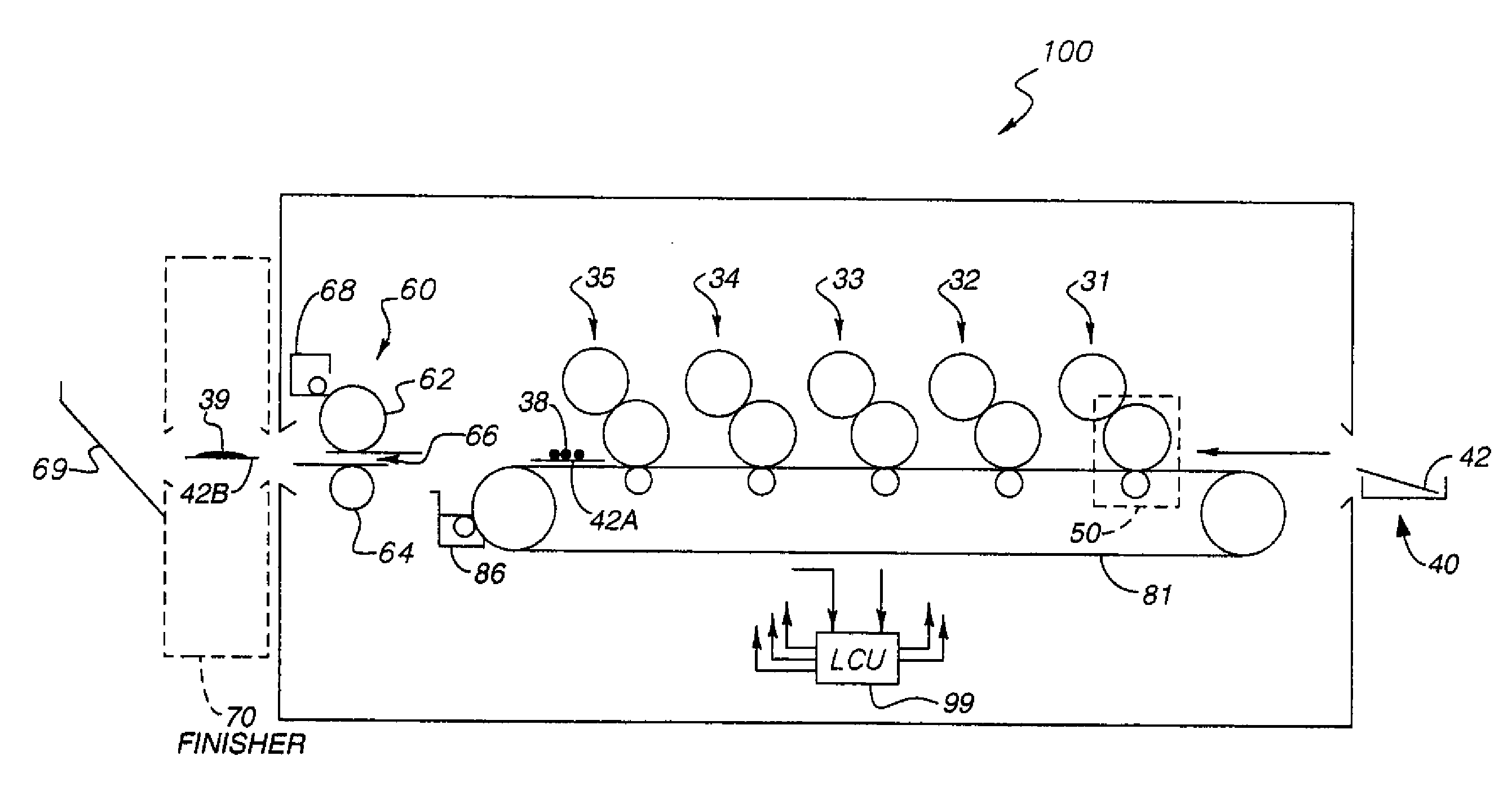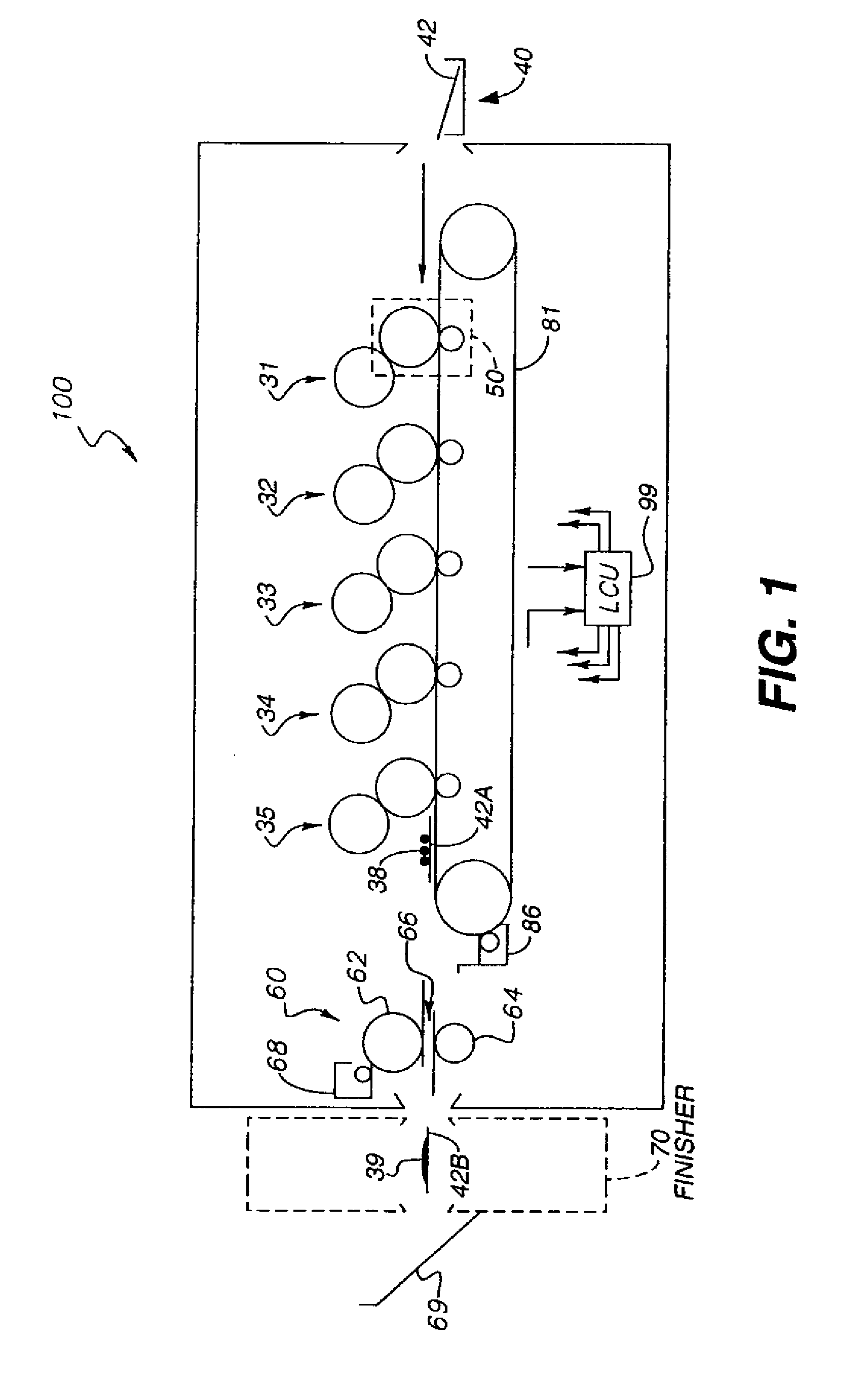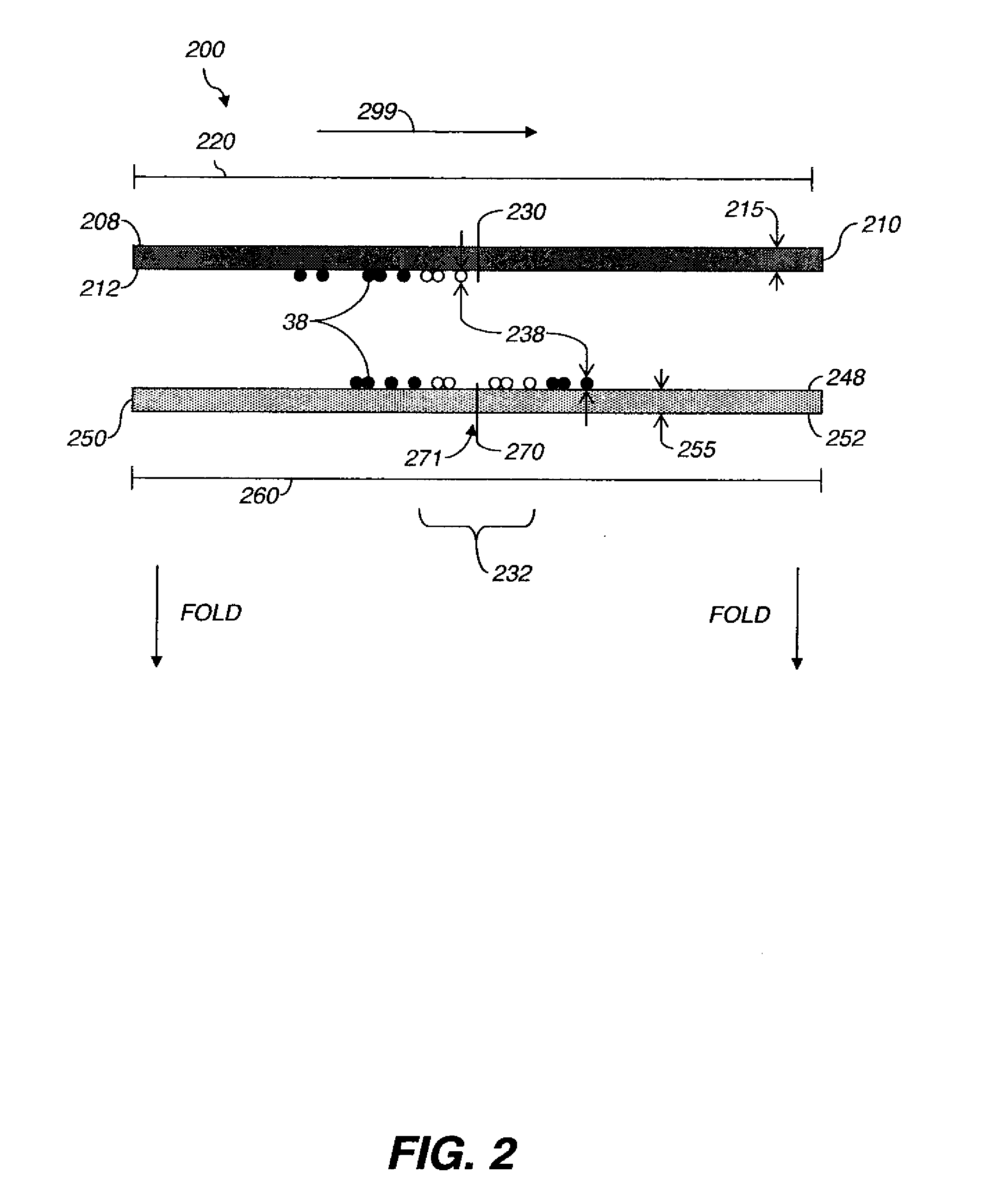Making booklet by iteratively folding and cutting
a technology of iterative folding and cutting, applied in the field of finishing printed sheets, can solve the problems of not being able to produce more than 10 cut patterns without manual intervention, requiring more frequent changes to the finishing sequence, and not being able to meet the needs of consumer occupied environments, etc., and achieves the effect of reducing power draw and less audible nois
- Summary
- Abstract
- Description
- Claims
- Application Information
AI Technical Summary
Benefits of technology
Problems solved by technology
Method used
Image
Examples
Embodiment Construction
[0031]As used herein, the terms “parallel” and “perpendicular” have a tolerance of ±10°. The term “center” referring to the position of a fold edge has a tolerance of ±2 mm or ±5% of the length of a sheet, whichever is greater. The term “flush” referring to edges being cut to produce a booklet with an edge in which no pages protrude beyond other pages has a tolerance of ±0.5 mm or ±1% of the length of the sheets after cutting, whichever is greater.
[0032]As used herein, “sheet” is a discrete piece of media, such as receiver media for an electrophotographic printer (described below). Sheets have a length and a width. Sheets are folded along fold axes, e.g. positioned in the center of the sheet in the length dimension, and extending the full width of the sheet. The folded sheet contains two “leaves,” each leaf being that portion of the sheet on one side of the fold axis. The two sides of each leaf are referred to as “pages.”“Face” refers to one side of the sheet, whether before or afte...
PUM
 Login to View More
Login to View More Abstract
Description
Claims
Application Information
 Login to View More
Login to View More - R&D
- Intellectual Property
- Life Sciences
- Materials
- Tech Scout
- Unparalleled Data Quality
- Higher Quality Content
- 60% Fewer Hallucinations
Browse by: Latest US Patents, China's latest patents, Technical Efficacy Thesaurus, Application Domain, Technology Topic, Popular Technical Reports.
© 2025 PatSnap. All rights reserved.Legal|Privacy policy|Modern Slavery Act Transparency Statement|Sitemap|About US| Contact US: help@patsnap.com



